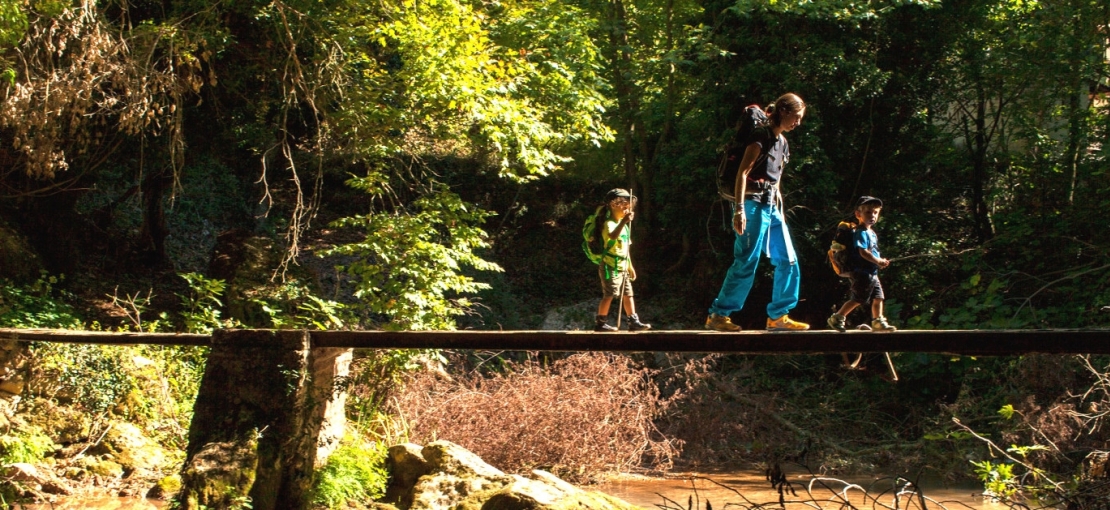
Clean and transparent supply chain as goal
Certified energy management
At the company headquarters in Tettnang-Obereisenbach, we have almost full control over how we deal with energy. In 2008 VAUDE introduced an operational Environmental Management System and has been certified according to EMAS and ISO14001 since that time.
Energy consumption in the value chain
Throughout the entire value chain, energy is needed not only by VAUDE. All upstream and downstream activities of product manufacturing, the related machines required, transport resulting from shipping, business travel and commuting, the use of the product during product life and even waste disposal also require energy in the form of electricity, fuel, etc.
Because this energy consumption is a cause of climate-damaging emissions, we report about them in the context of climate protection – see Emissions.
Energy for product manufacturing
The vast majority of our products are manufactured at sites outside of Tettnang-Obereisenbach. In contrast to the situation at the company headquarters, VAUDE has very little control over how the upstream supply chain handles energy.
The necessary manufacturing of materials and components (such as fabrics or zips), production of chemical additives (for example dyes) and substances for product functionality (such as water repellency and UV protection) consumes energy. Sewing the products also requires energy.
Still there are no statutory provisions regulating the designation of energy consumption in the manufacturing of outdoor products, let alone legal requirements for their energy efficiency.
Clean and transparent supply chain as goal
VAUDE commissions independent producers to manufacturer its goods. We do try to influence energy-saving production by stipulating which materials are to be used, for example with the bluesign® standard.
However, we must clearly recognize that our influence has been quite limited in the supply chain thus far. It has not been possible to obtain reliable data on energy consumption from producers and suppliers that would create a reference base for the manufacturing of VAUDE products.
Environmental Stewardship pilot project
We know that we have an urgent need for action on this issue, both in terms of creating data transparency, as well as in terms of energy management in the supply chain. We are pursuing two strategic approaches in this issue: the expansion of the bluesign® system and the building of a database that collects all environmental data through the Higg Index – see bluesign®: World's Strictest Standard and Higg index.
In a pilot project, we are currently introducing an environmental management system with various suppliers. Within this Environmental Stewardship Program, suppliers are also trained on how to deal with energy use.
Why saving energy is so important
Energy is still generated using fossil fuels in most regions of the world. The depletion of limited, non-renewable resources like oil, gas or coal is negatively encroaching on ecosystems.
Struggle for energy causes conflicts
Time and again, the distribution of energy leads to social conflicts, such as the Russian natural gas pipeline through Ukraine or the war in Iraq.
The more independent we are of such energy sources as a company, the less our economic risk, and of course our moral "complicity" in such conflicts as well.
Slowing climate change
The consumption of energy ultimately contributes significantly to the production of greenhouse gases such as carbon dioxide (CO2). These are largely responsible for climate change, which threatens the very existence of mankind. The less energy we consume and the more this comes from renewable sources, the greater our contribution to climate protection.
Company headquarters in Tettnang are climate neutral
To compensate for the negative impact of our energy consumption, we have been compensating for our total power consumption (in addition to other consumption such as for materials) at our headquarters in Tettnang-Obereisenbach through the myclimate organization since 2012. The entire VAUDE site in Tettnang-Obereisenbach including bag manufacturing there is considered "climate neutral." - see Climate Neutral at the Tettnang Headquarters.
| GRI: | G4-DMA Energy |
| GRI: | G4-EN4 |
| GRI: | G4-EN5 |
| GRI: | G4-EN19 |






